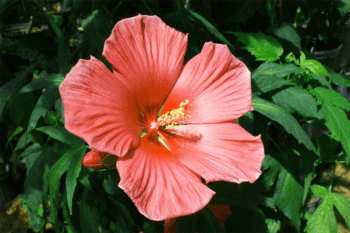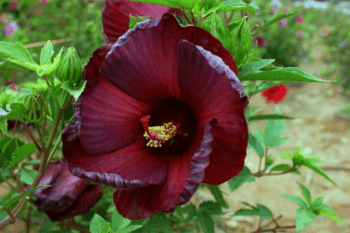A Painter’s Palette Of Winter-Hardy Hibiscus

Like an artist using the paint on a palette, Dr. Dariusz Malinowski is mixing pollen to create a flowering masterpiece in the form of tropically colored winter-hardy hibiscus.
Three years after the Texas A&M AgriLife Research breeding team at Vernon created the first blue-flowering winter-hardy hibiscus, they have come up with a new salmon-colored garden jewel, Malinowski said.
“In the past six years, we have disclosed to the Texas A&M University System Office of Technology and Commercialization more than 180 unique lines of winter-hardy hibiscus with very unusual flower and leaf color and shape,” he said.
With his two colleagues, Dr. William Pinchak, AgriLife Research animal nutritionist, and Steve Brown, Texas Foundation Seed Service program director, both based in Vernon, Malinowski continuously works on creating new colors in winter-hardy hibiscus.

“Until a few years ago, these beautiful flowers were available only in white, pink and red,” Malinowski said. “The introduction of a purple color in the cultivar ‘Plum Crazy’ by Flemings Brothers in 1999 was an important progress in the winter-hardy hibiscus breeding.”
He said in contrast to the tropical hibiscus, its distant relative, the winter-hardy hibiscus has a very narrow genetic potential for new colors to appear in the process of selective breeding. One reason is the relatively short time breeders have been attempting to create new flower colors compared to the efforts and time put into developing new color combinations in tropical hibiscus.
Continue reading and see more colors on AgriLife Today.
This article by Kay Ledbetter originally appeared in Texas A&M AgriLife Today.





